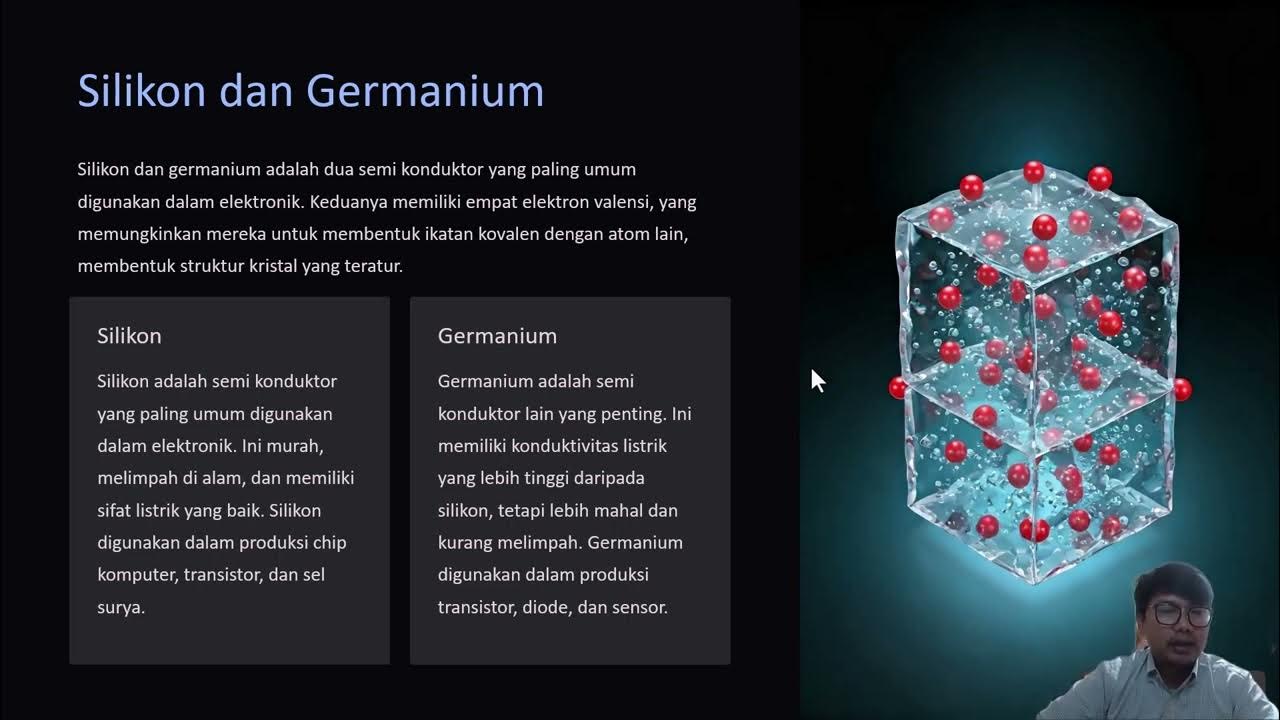Semiconductor Materials
Summary
TLDRThis lecture covers the fundamentals of semiconductor materials, focusing on conductors, insulators, and semiconductors. It explains their properties, resistivity, and energy band diagrams, highlighting the role of materials like copper, aluminum, mica, silicon, and germanium. The lecture introduces key concepts such as the resistivity of materials and the importance of energy band gaps in determining electrical conductivity. Special attention is given to silicon and germanium, their atomic structures, and how they form covalent bonds in semiconductor lattices. The session sets the stage for a deeper understanding of intrinsic and extrinsic semiconductors and the electron-hole model in future lectures.
Takeaways
- 😀 Conductors are materials that support the easy flow of charge, such as copper and aluminum, which are widely used in electrical wiring.
- 😀 Insulators have low conductivity and resist the flow of current, with examples including mica and wood, which are used for electrical and thermal insulation.
- 😀 Semiconductors, like silicon and germanium, have conductivity levels between conductors and insulators, making them essential for electronic devices.
- 😀 The resistivity of a material is a key property that determines its ability to conduct electricity, with conductors having low resistivity and insulators having high resistivity.
- 😀 For conductors like copper, resistivity is very low (around 10^-6 ohm cm), allowing high current flow, while insulators like mica have very high resistivity (around 10^12 ohm cm), preventing current flow.
- 😀 Semiconductors have resistivity between that of conductors and insulators, with silicon having a resistivity of 50 × 10^3 ohm cm and germanium 50 ohm cm.
- 😀 The energy band diagram of a semiconductor shows that electrons must move from the valence band to the conduction band to participate in conduction, requiring energy to overcome the band gap.
- 😀 The band gap for insulators is large (around 6 eV), making it difficult for electrons to move to the conduction band, while semiconductors have smaller band gaps (~1 eV for silicon and 0.75 eV for germanium).
- 😀 Conductors have no band gap, as the valence and conduction bands overlap, allowing free electron movement and high conductivity.
- 😀 Silicon and germanium are both Group 4 elements in the periodic table, with four electrons in their outermost orbit, which contributes to their semiconductor properties and the formation of covalent bonds in their crystal lattice.
Please replace the link and try again.
Outlines

This section is available to paid users only. Please upgrade to access this part.
Upgrade NowMindmap

This section is available to paid users only. Please upgrade to access this part.
Upgrade NowKeywords

This section is available to paid users only. Please upgrade to access this part.
Upgrade NowHighlights

This section is available to paid users only. Please upgrade to access this part.
Upgrade NowTranscripts

This section is available to paid users only. Please upgrade to access this part.
Upgrade NowBrowse More Related Video

Classification of Semiconductors (Intrinsic/Extrinsic, P-Type/N-Type)

Band Gap and Semiconductor Current Carriers | Intermediate Electronics

Pengantar Semi Konduktor

How do semiconductors work? (with animation) | Intermediate Electronics

Semiconductors - Physics inside Transistors and Diodes

Semiconductors, Insulators & Conductors, Basic Introduction, N type vs P type Semiconductor
5.0 / 5 (0 votes)